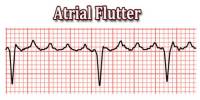According to new research published today in the Journal of the American Heart Association, an open access, peer-reviewed journal of the American Heart Association, particle radioactivity, a characteristic of air pollution that reflects the colorless, odorless gas radon found in fine particulate matter (PM2.5) air pollution, enhances PM2.5 toxicity and increases risk of death from cardiovascular disease, especially from heart attack or stroke.
Previous studies in science have established that the air pollution component PM2.5, which also causes cardiovascular disease and death, is a modifiable risk factor for the disease.
The American Heart Association joined forces with three other major cardiovascular groups in 2021 to call on the medical profession and government health agencies to lessen the negative effects of air pollution on people’s health.
The report estimates that 6.7 million fatalities in 2019, or 13% of all deaths worldwide, were caused by indoor or outdoor air pollution. Cardiovascular disease caused up to half of them. The risk of heart attack, stroke, diabetes, and respiratory illnesses is also increased by air pollution.
Particulate matter that reflects radon has a property called particle radioactivity. Radon gas, a radioactive, colorless, and odorless gas, is the main source of this characteristic. The radioactive decay of uranium, which is present in rocks and soil, produces the particle radioactivity naturally. When radon migrates into the atmosphere, it breaks down into isotopes that produce alpha, beta, and gamma radiation.
“We know that PM2.5 are very small particles in the air that can be inhaled and cause many health problems. However, little is known about which physical, chemical or biological properties of PM2.5 fuel its toxicity,” said study author Shuxin Dong, S.M., a Ph.D. student in population health sciences at Harvard T.H. Chan School of Public Health in Boston.
“We studied gross beta-activity, a property of fine particulate matter that is a result of radon that attaches to particles and makes them radioactive, resulting in particle radioactivity. When inhaled, these very small particles penetrate deeply into the lungs and enter the bloodstream and circulate throughout the body.”
The risk of death from cardiovascular disease, heart attack or stroke and all causes due to PM2.5 was higher and, therefore, more toxic when gross beta-activity levels were higher. These findings suggest that particle radioactivity increases the risk of death from cardiovascular disease and enhances the damage from particulate matter. This must be further investigated and may lead to targeted, cost-effective air quality regulations.
Shuxin Dong
To make more accurate forecasts of exposure, the researchers used spatiotemporal predictions of gross beta-activity, a technique that uses many variables across place and time.
Examining health records from more than 700,000 non-accidental deaths in Massachusetts between 2001 and 2015, they estimated how long-term (months/year) gross beta-activity exposure impacts death from cardiovascular disease, heart attack or stroke and death from all non-accidental causes. They also predicted PM2.5 on cardiovascular disease-related death and examined the interaction between PM2.5 and particle radioactivity.
The study found:
- Chronic particle radioactivity and PM2.5 exposure were both linked to an increased chance of dying from any cause of non-accidental mortality, including total cardiovascular disease, heart attack, or stroke.
- Based on the middle 50% of the data spread, particle radioactivity exposure alone was associated with a 16% increased risk of death from heart attack; an 11% increased risk of death from stroke; a 7% increased risk of death from all types of cardiovascular disease; and a 4% increased risk of death from all non-accidental causes.
- Based on the middle 50% of the data spread, PM2.5 exposure alone increased the risk of death from heart attack by 6%; death from stroke by 11%; death from all cardiovascular disease by 12%; and death from all non-accidental causes by 10%.
“The risk of death from cardiovascular disease, heart attack or stroke and all causes due to PM2.5 was higher and, therefore, more toxic when gross beta-activity levels were higher,” Dong said.
“These findings suggest that particle radioactivity increases the risk of death from cardiovascular disease and enhances the damage from particulate matter. This must be further investigated and may lead to targeted, cost-effective air quality regulations.”
The fact that the research was only based on data from one state, Massachusetts, means that the findings may not be applicable to the rest of the United States.
Co-authors are Petros Koutrakis, Ph.D.; Longxiang Li, Ph.D.; Brent A. Coull, Ph.D.; Joel Schwartz, Ph.D.; Anna Kosheleva, M.S.; and Antonella Zanobetti, Ph.D. Authors’ disclosures are listed in the manuscript.
The U.S. Environmental Protection Agency and the National Institutes of Health funded the study.
















